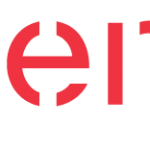This post is also available in: Italian
Reading Time: 3 minutesOpenIO is a startup founded in 2015 by a team of 7 co-founders, experts in mail and data infrastructures. The headquarter is located in Lille, France, and there is also an OpenIO office in San Francisco.
Was one of the companies that I’ve see during the last A3 Communications Technology Live!, also I’ve met them some months ago during the IT Press Tour #17.
They build a scalable solution designed to grow as you need, that can handle from terabytes to petabytes. This Object Storage solution became Open Source in 2012 (with AGPLv3 license). OpenIO is a pure (open) software object store.
But if you don’t know the history of this project, could just seems another object storage only software based.
Also if the company is really new, the idea behind this product as stated on 2006 to address a specific need: find a technology to manage 60M emails accounts from a service provider. OpenIO product is just a fork from this project:
 There are several interesting aspects of this product, like the scaling without rebalance needs, the real-time load balancing for optimal data placement, the internal architecture on how objects are organized. But in my point of view one aspect is quite unique: the interoperability provided by several connectors.
There are several interesting aspects of this product, like the scaling without rebalance needs, the real-time load balancing for optimal data placement, the internal architecture on how objects are organized. But in my point of view one aspect is quite unique: the interoperability provided by several connectors.
For email there are connectors for:
- Cyrus Imap
- Zimbra
- Mail Object
- Dovecot
And for video broadcast there are:
- HTTP connector
- Adaptive streaming connector
- Event based transcoding
And there are also storage connectors:
- File System (NFS)
- OpenStack SWIFT
- Amazon S3
If storage protocols are quite often in several object storage, the application integration is more un-common, and have a service tight coupled with the data could be an real advantage in terms of optimizations. Of course you can see this also as a lock-in, but each solution has some kind of lock-in risks and you have to look on how you can move and export your data, rather on how they are stored.
Current version is OpenIO 15.12, and 16.04 is actually in beta (curios numbers, but considering that is running on Linux could be related to the distribution versioning). Could be interesting see the evolution of this product where the biggest value could be in some specific users cases and the application integration. Having more application connectors or also a SMB storage protocols can make this product more general purpose.
Finally a consideration about their approach on scaling: instead of look at big nodes, they are considering to have lot of small nodes as a promising deployment scenarios. This has several implications on how build those nodes without wasting too much resources, as also how manage them easily. The second problem is just solved by their automations (they are using Puppet for this) and the huge scalability of the product. About the size of the nodes, one interesting project is to use Kinetic drives where one node is just one (huge) disk. The idea is ambitious, but quite interesting and can be used also by other storage vendors.
Disclaimer: A3 Communications has invited me to this even and they has covered also the travel expenses, but I am not compensated for my time and I’m not obliged to blog. Furthermore, the content is not reviewed, approved or published by any other person than me.




